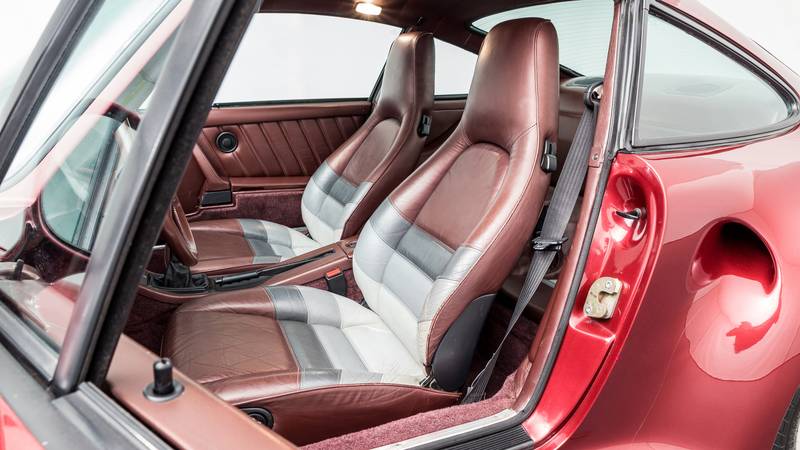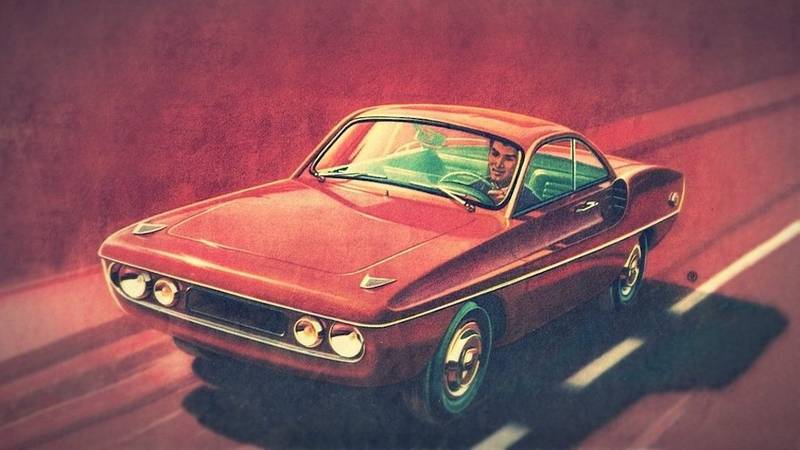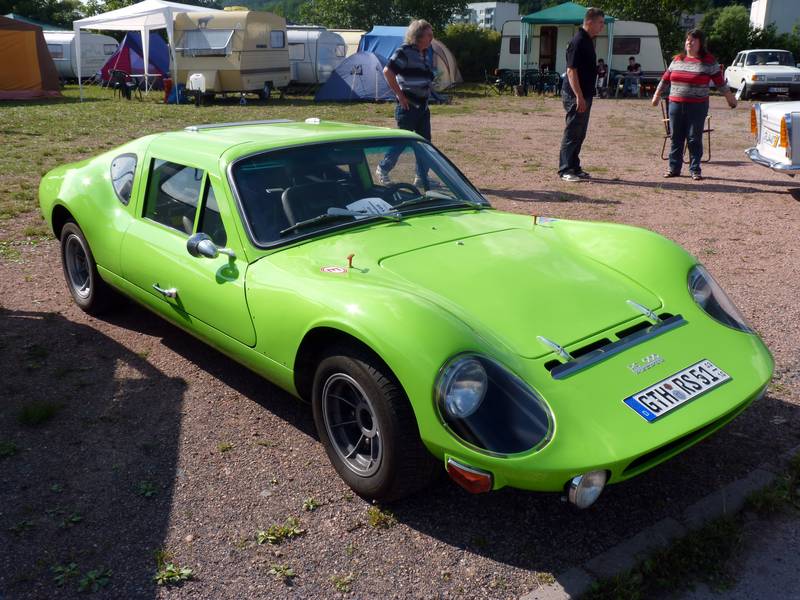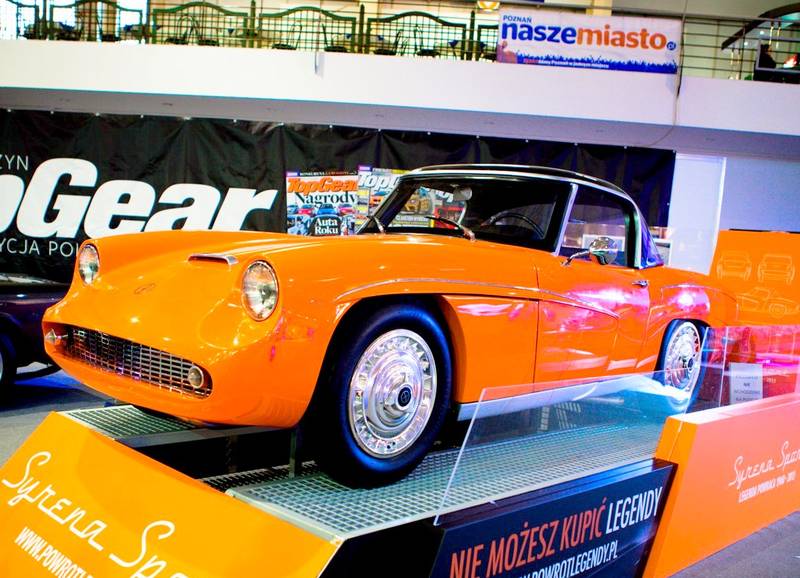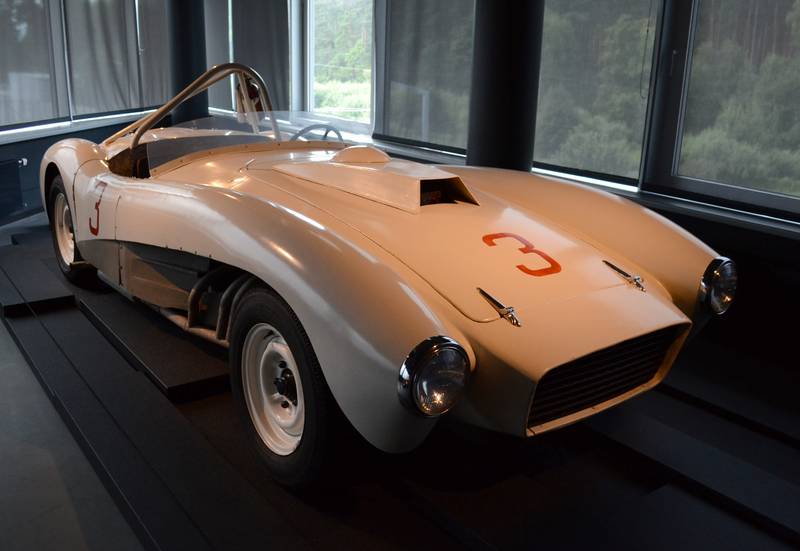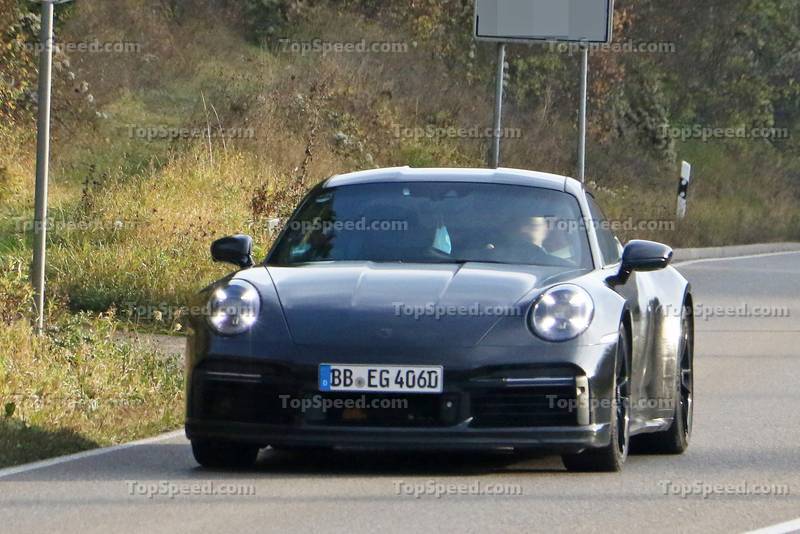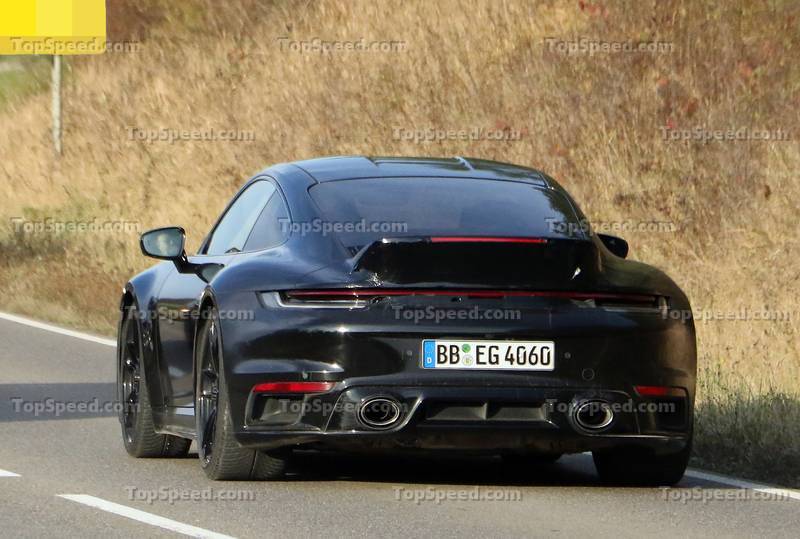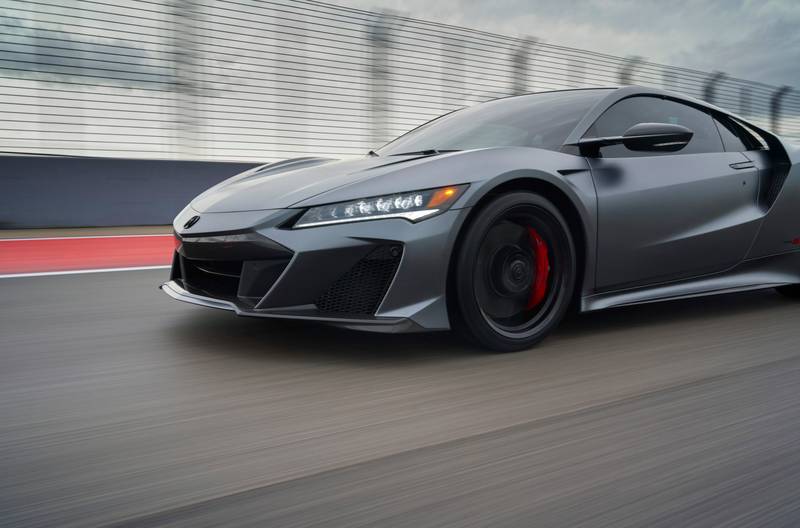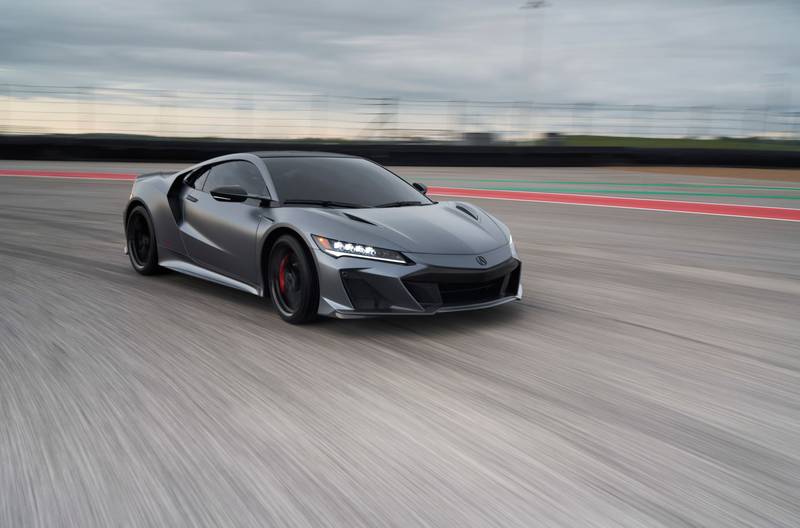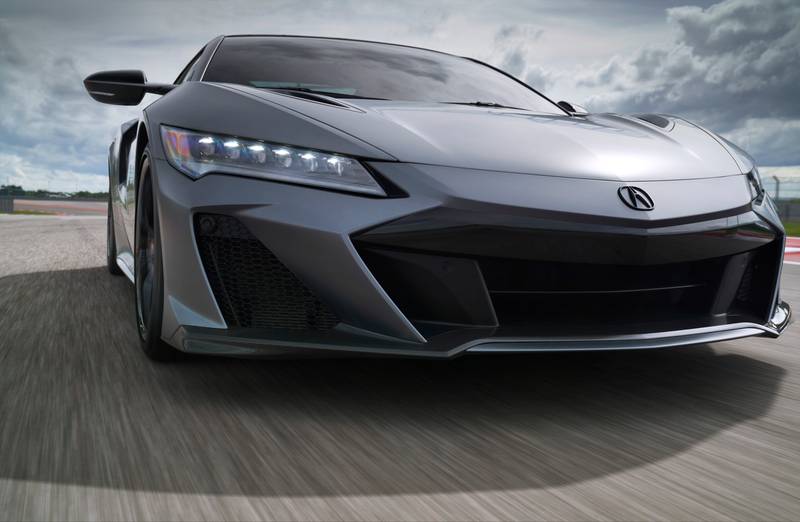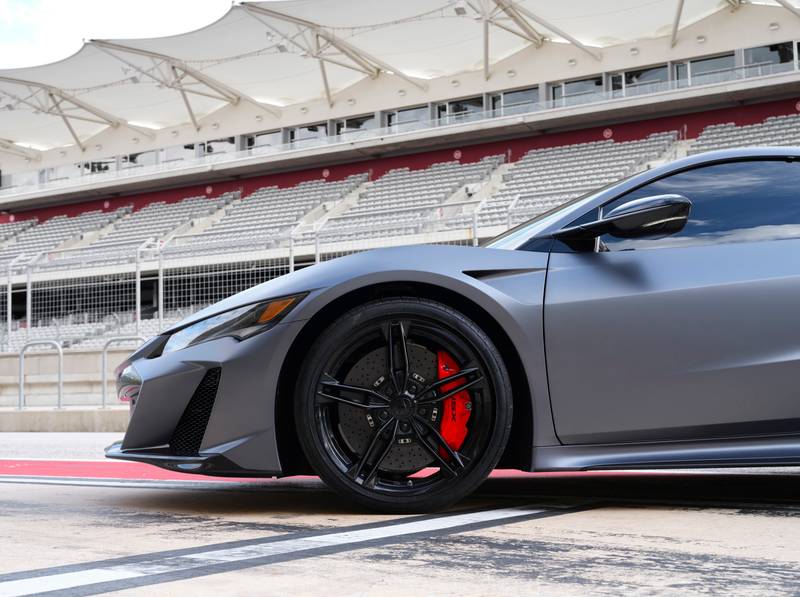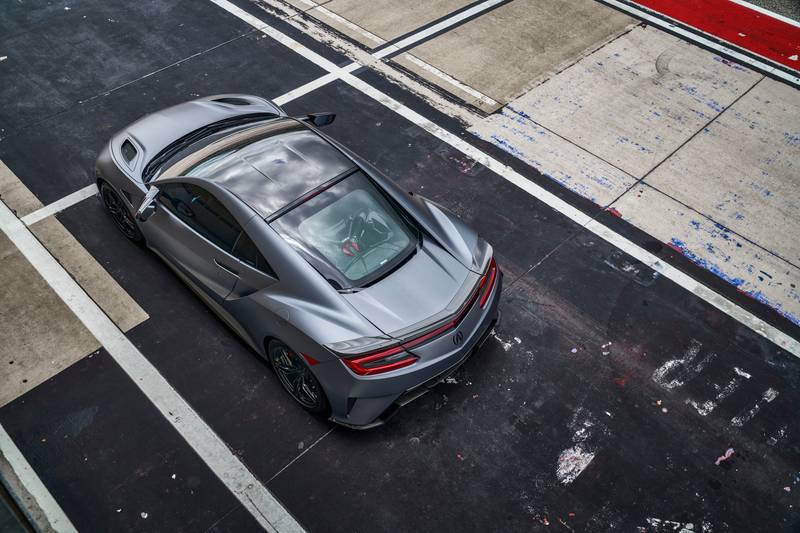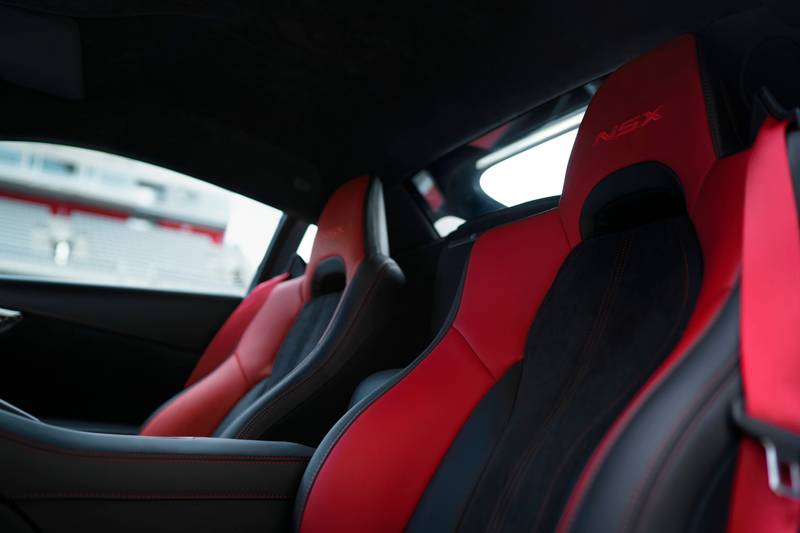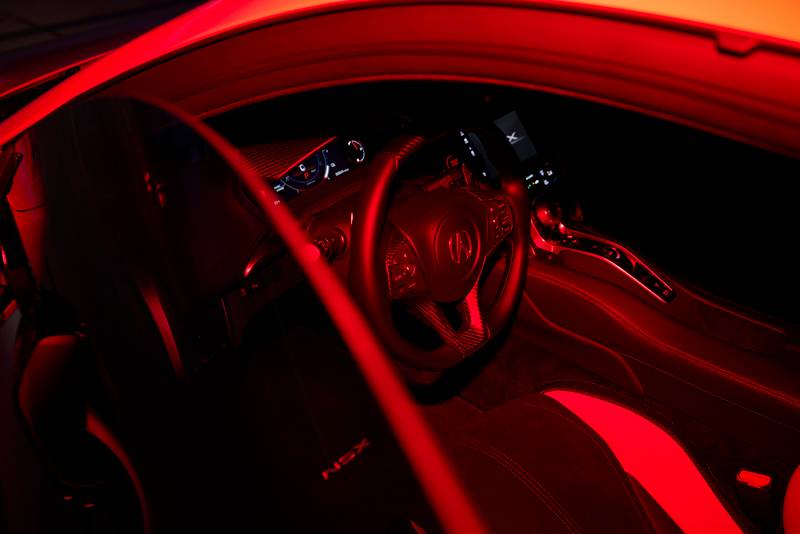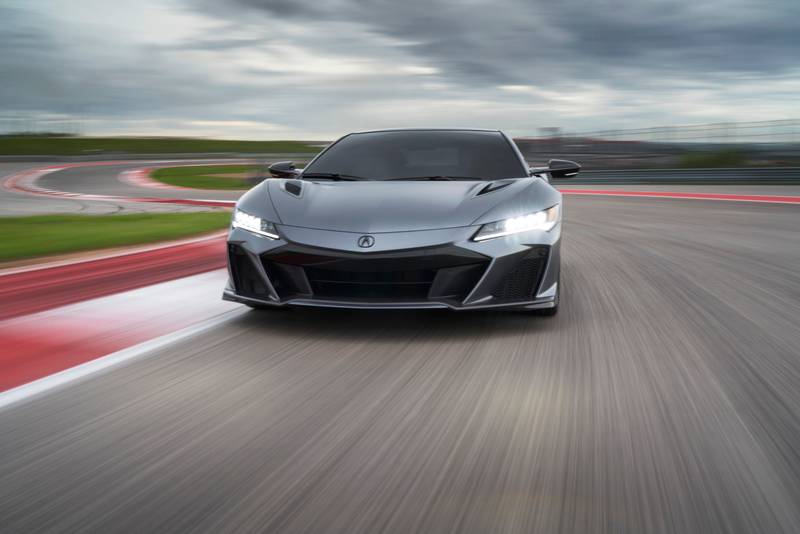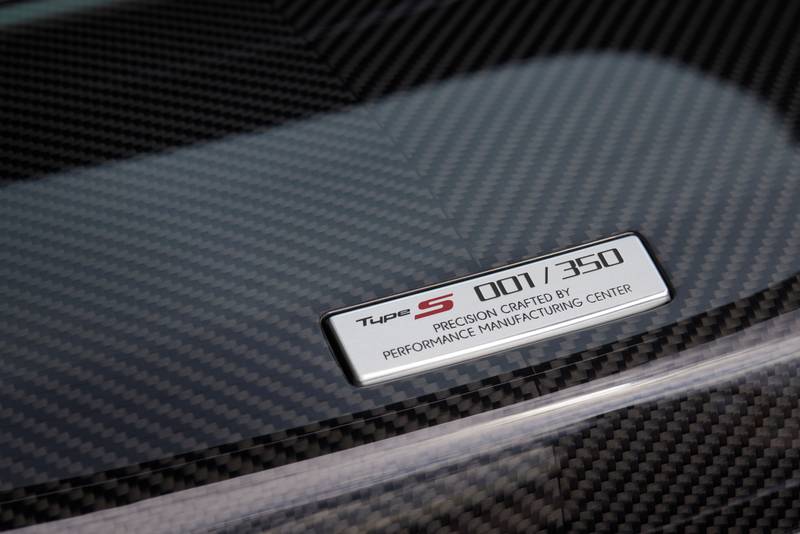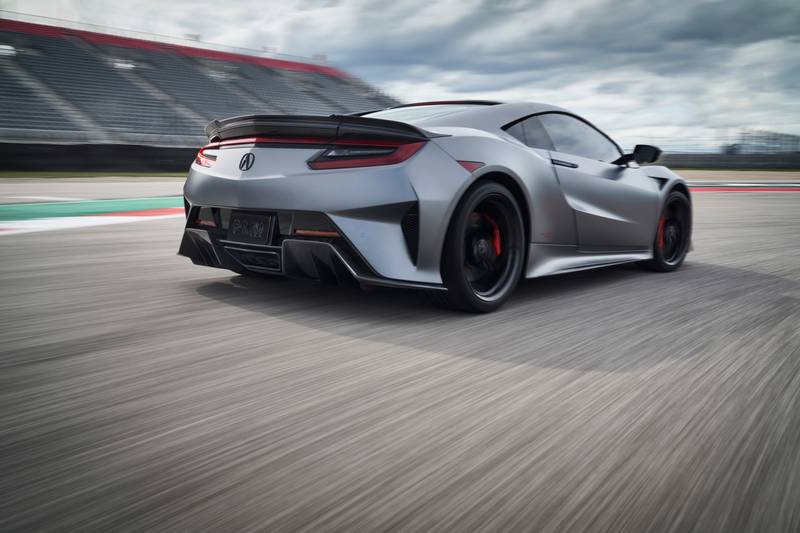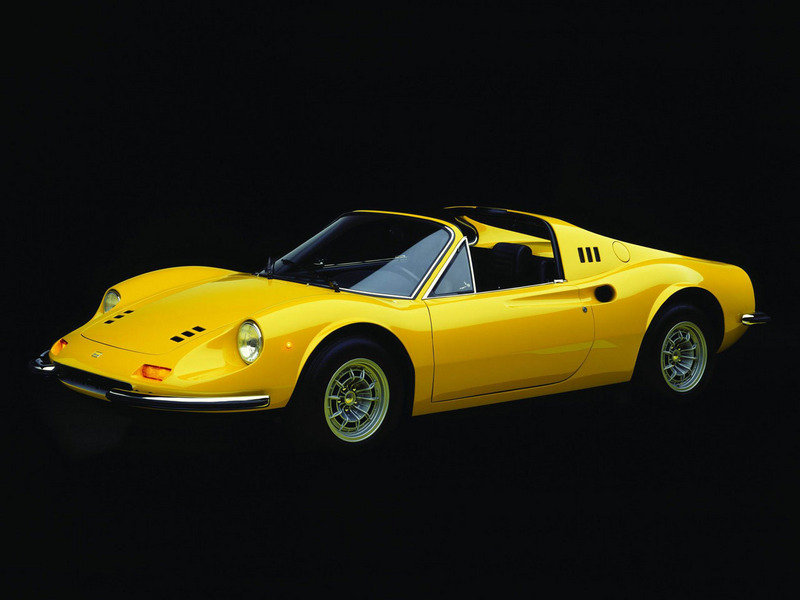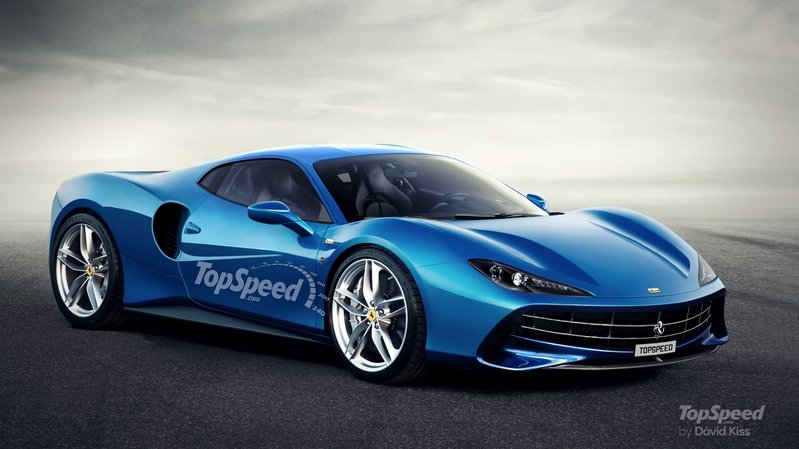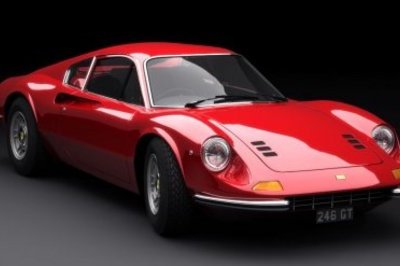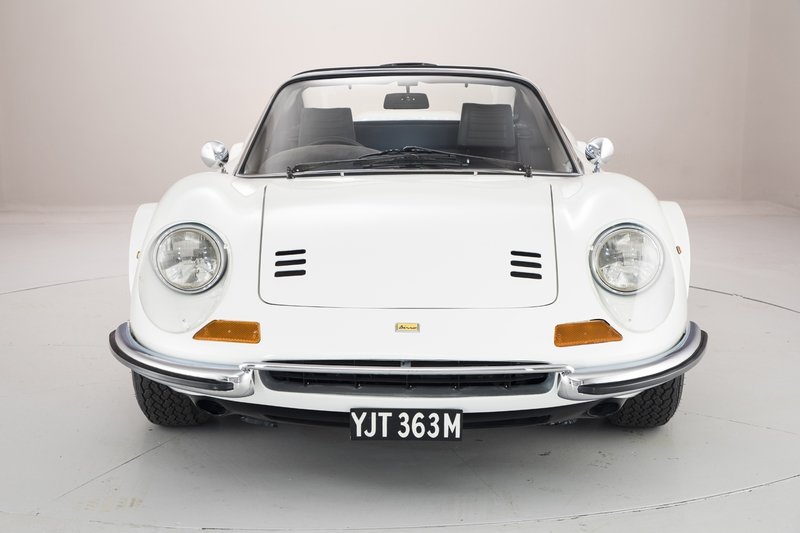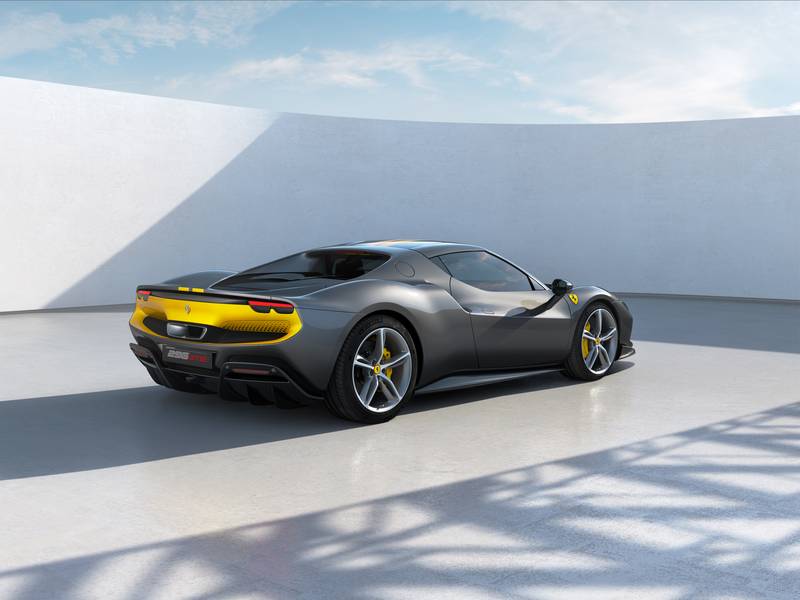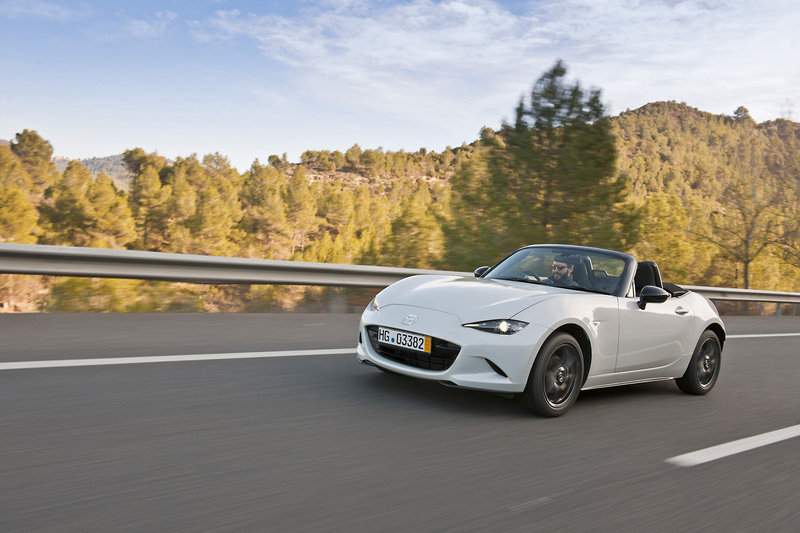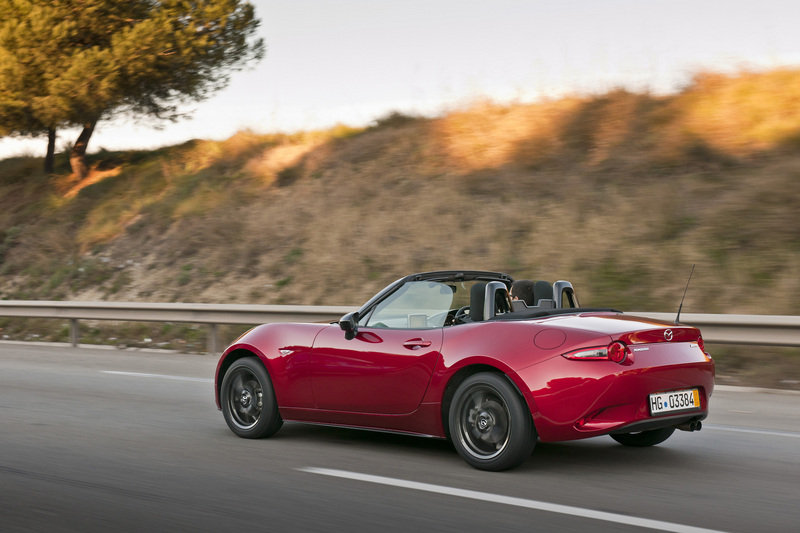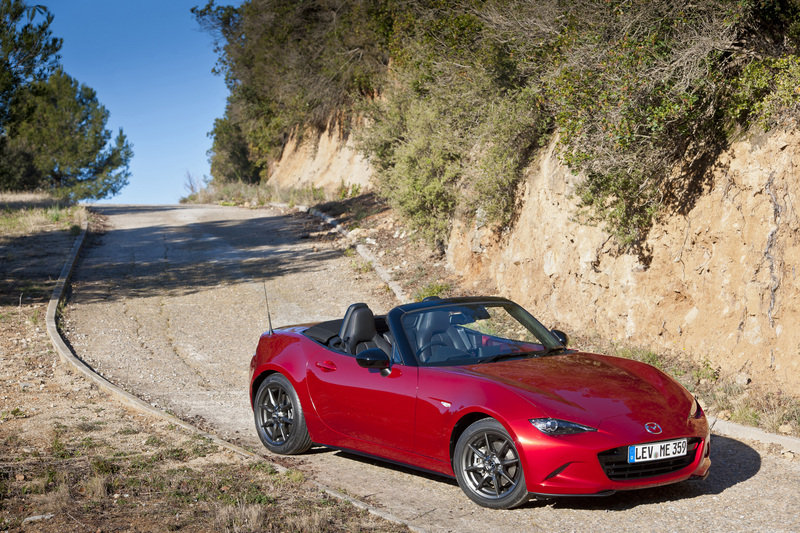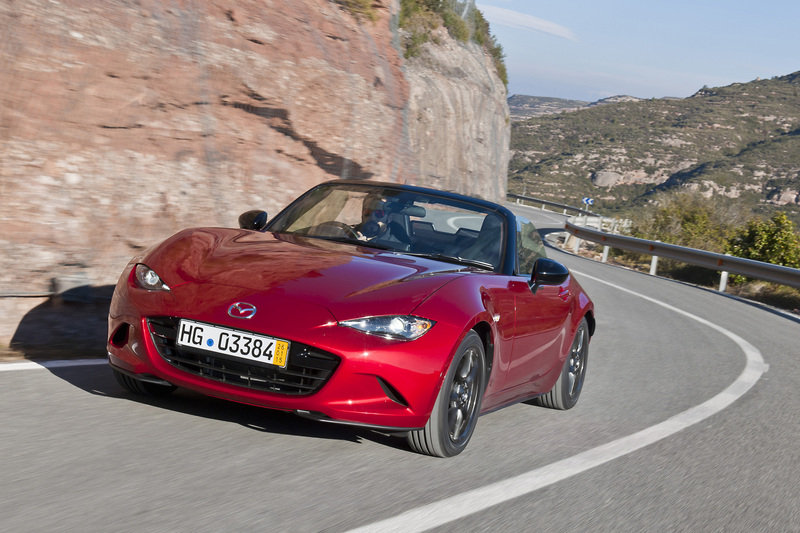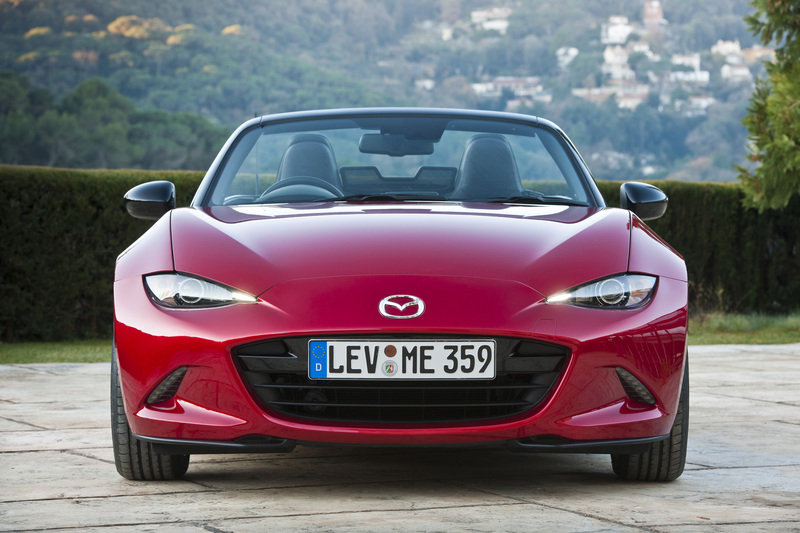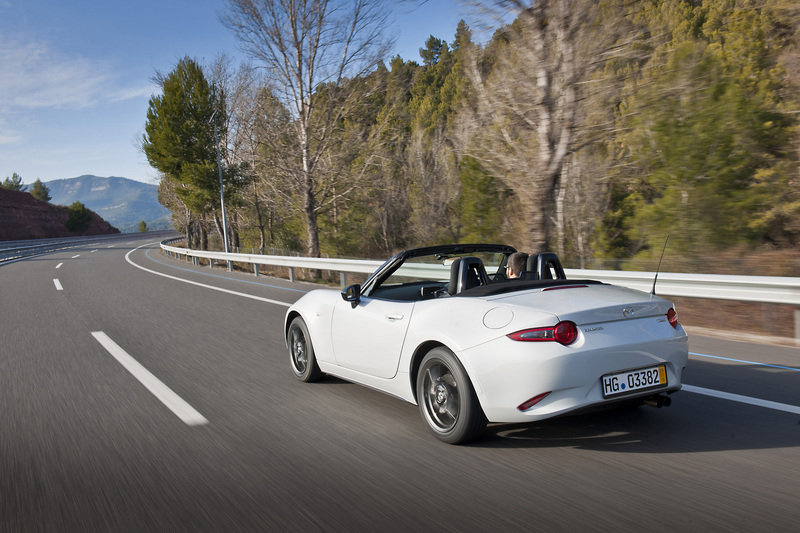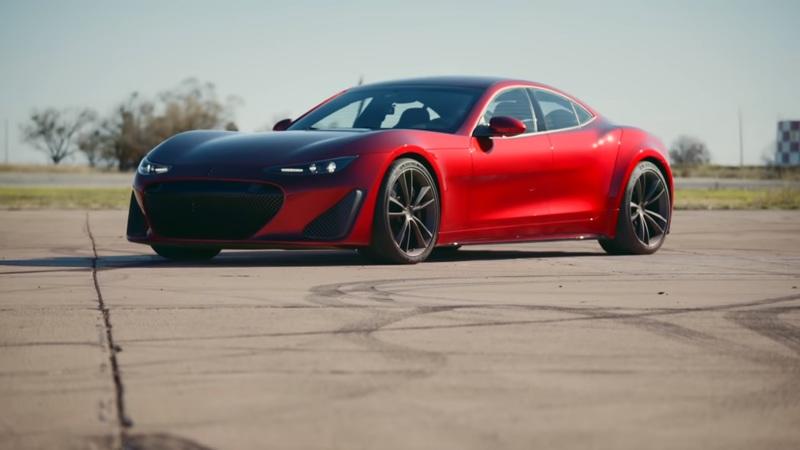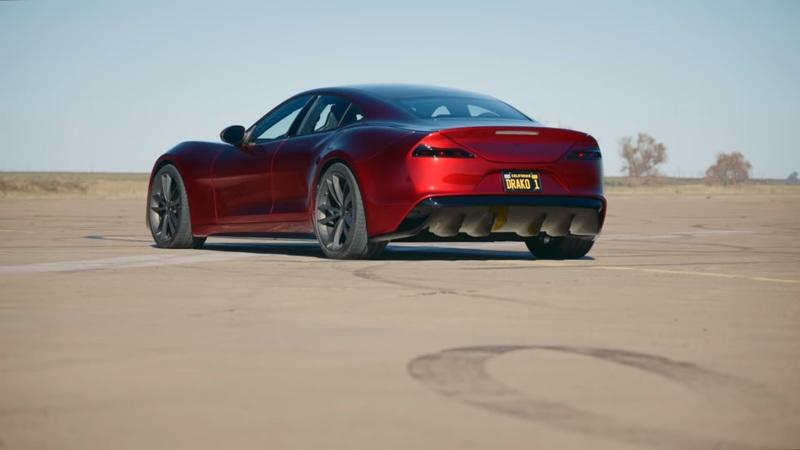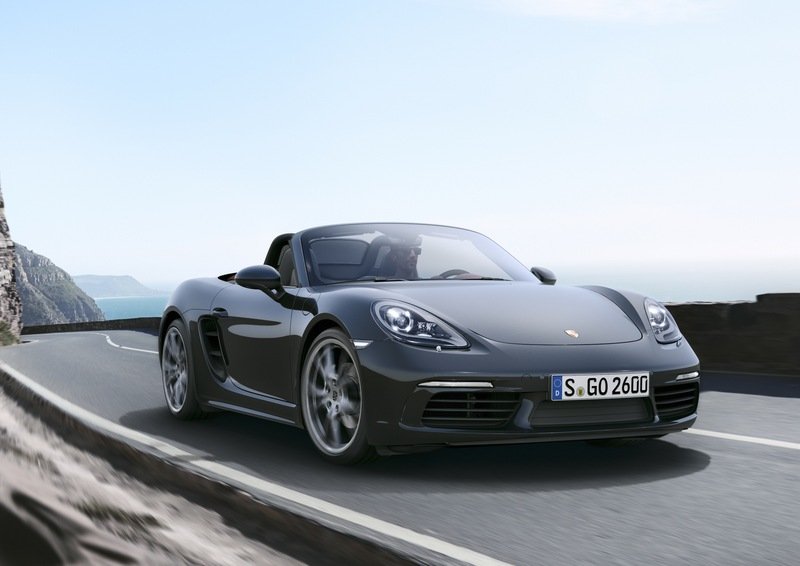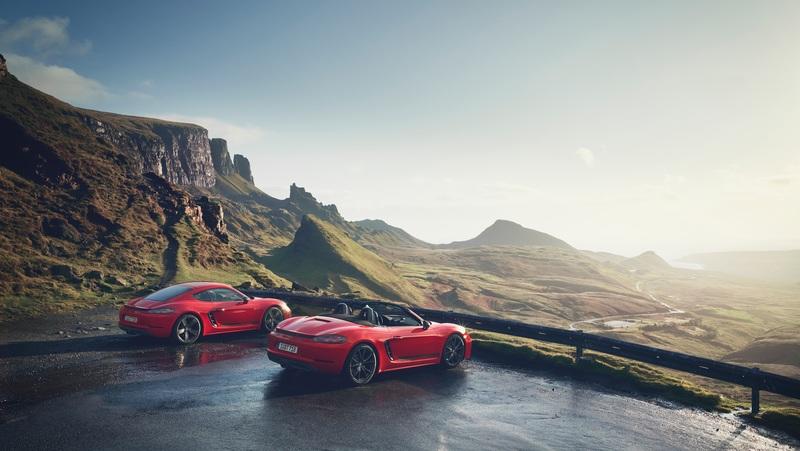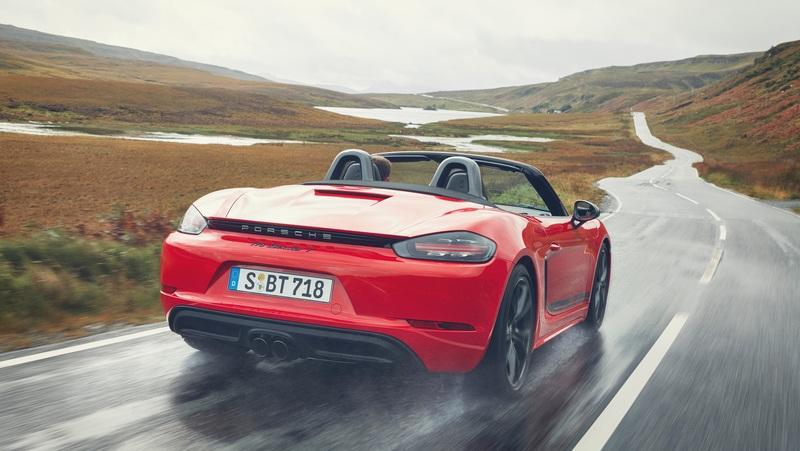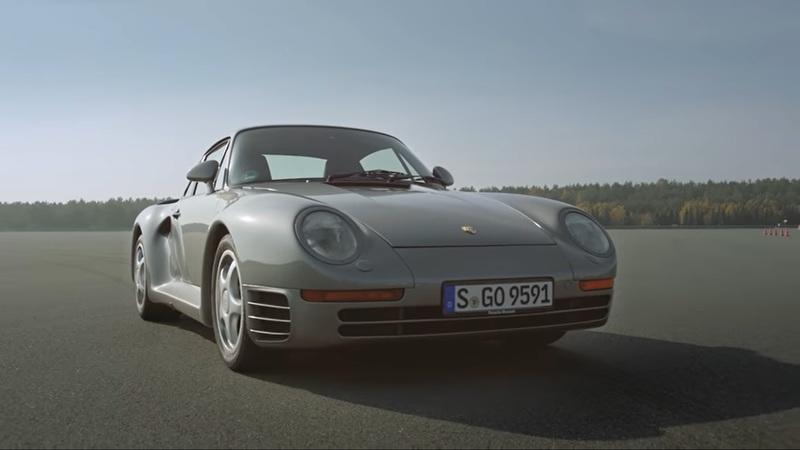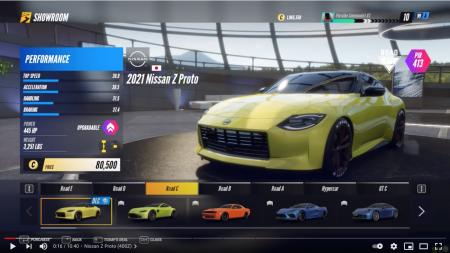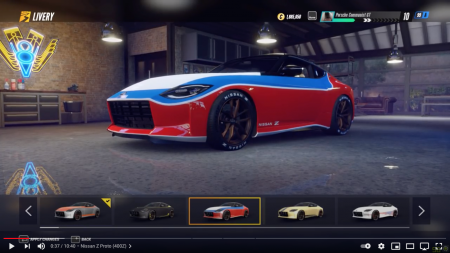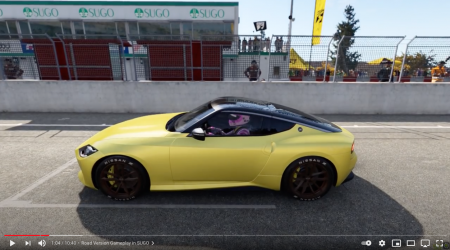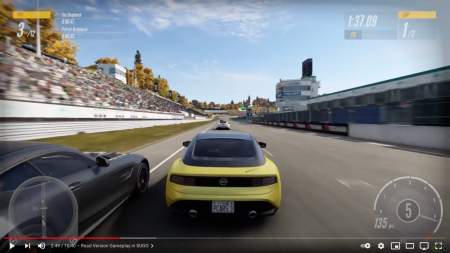2022 Acura NSX Type S – Drivetrain
The Acura NSX will be powered by the same 3.5-liter, twin-turbo V-6 engine paired with three electric motors. The turbos are borrowed from the NSX GT3 Evo race car with a six-percent increase in the boost pressure. In the standard NSX, the combined power outputs are rated at 573 horses and 476 pound-feet of torque. Here, however, the setup receives a power bump.
The V-6 engine makes 520 ponies between 6,500- and 6,850 rpm and 443 pound-feet of torque between 2,300- and 6,000 rpm. The front twin-motor setup makes 72 horses and 108 pound-feet of twist, whereas the rear setup puts out 47 horses and 109 pound-feet of torque.
Combined, the Acura NSX Type S will make 600 ponies and 492 pound-feet of twist, which is an increase of 27 horses and 16 pound-feet of oomph over the standard NSX. This makes it the most powerful road-going Acura ever!
The NSX Type S comes with a Sport Hybrid all-wheel-drive system and a nine-speed dual-clutch automatic gearbox. The gearbox receives enhancements, too. There’s a new Rapid Downshift Mode that will help the car drop gears without any hesitation. Also, the upshifts will be 50-percent faster, apparently.
The electric motors draw power from a 1.3 kWh battery pack.
Acura didn’t get into the specifics, but noted that the NSX Type S can sprint to 60 mph from rest in under three seconds and will have a top speed of 191 mph, which is the same as the standard NSX.
2022 Acura NSX Type S – Exterior
On the outside, the NSX Type S comes with aero upgrades over the standard NSX. This includes a larger grille up front to let the engine breathe better, a carbon fiber, NSX GT3-inspired rear diffuser, carbon fiber roof, etc. Even the rear spoiler, side sills, and front splitter are composed of carbon fiber.
The NSX Type S rides on new five-spoke performance forged wheels that measure 19 inches up front and 20 inches at the rear. You can have them in Matte Shark Grey or Berlina Black finish. They come wrapped in Pirelli P-Zero tires on all four corners. They measure 245/35 section at the front and 305/30 section at the rear. These tires are specially developed for Acura.
The car is available in 10 exterior shades:
- Berlina Black
- 130R White
- Curva Red
- Casino White Pearl
- Thermal Orange Pearl
- Indy Yellow Pearl
- Long Beach Blue Pearl
- Nouvelle Blue Pearl
- Valencia Red Pearl
- Gotham Gray
70 of the 350 cars will be finished in Gotham Gray with a matte finish.
How Big Is The NSX Type S?
The NSX Type S is 178.5 inches in length, 87.3 inches in width, and 47.8 inches in height. The wheelbase measures 103.5 inches and it sits just 3.8 inches above the ground. The approach and departure angles are rated at 9.2- and 12.9 degrees, respectively. As for the track widths, the car has a 65.5-inch track at the front and 64.5-inch at the rear; 0.4- and 0.8 inches wider than the standard NSX.
Acura hasn’t mentioned how much the NSX Type S weighs. But, for reference, the 2021 NSX weighs 3,878 pounds.
2022 Acura NSX Type S – Interior
On the inside, the car is offered in three different colors: Ebony, Red, and Orchid. The NSX Type S comes with Sport seats with semi-aniline leather as standard. It also features a seven-inch touchscreen infotainment system with Apple CarPlay and Android Auto compatibility. Some of the other niceties inside the cabin include:
- Dual-zone Automatic Climate Control
- Four-way Power Adjustable Seats
- Leather-wrapped Steering Wheel
- Aluminum Sport Pedals
- Ambient Lighting
How Spacious Is The NSX Type S?
On the inside, the NSX Type offers 38.3 inches of headroom, 42.9 inches of legroom, 57.7 inches of shoulder room, and 54.5 inches of hip room. There’s isn’t much cargo space available, but if you still intend to carry something around, you have 3.9 cubic feet of space at your disposal.
2022 Acura NSX Type S – Pricing
The Acura NSX Type S starts at $169,500. With the $1,995 destination, it starts at $171,495. The Light Weight Package adds another $13,000 to the price.
2022 Acura NSX Type S – Optional Accessories and Packages
Acura is offering many optional accessories and packages for the 2022 NSX Type S. Getting the cost of the car close to $200,000 won’t be tough if you opt for them. The packages include:
Light Weight Package – $13,000
- Carbon Ceramic Brembo Brakes (Black, Silver, Red, or Orange Brake Calipers)
- Carbon Fiber Meter Visor
- Carbon Fiber Steering Wheel Garnish
- Gloss Carbon Fiber Engine Cover
- Leads to a weight reduction of 58 pounds
Carbon Fiber Interior Sport Package – $2,500
- Carbon Fiber Meter Visor
- Carbon Fiber Steering Wheel Garnish
- Alcantara Headliner
There are a ton of accessories, too, and they include:
- Exterior Pearl or Metallic Color – $1,000
- Exterior Andaro or Matte Color – $6,000
- Carbon-Ceramic Brake Rotors with Red Brake Caliper Finish – $9,900
- Carbon-Ceramic Brake Rotors with Black, Silver, or Orange Brake Caliper Finish – $10,600
- Performance Five-Spoke Wheels in Berlina Black – $1,500
- Carbon Fiber Engine Cover – $3,600
- Semi-Aniline Full Leather Power Sport Seats – $1,000
- ELS Studio Audio & Technology Package with SiriusXM Satellite Radio – $500
Conclusion
As mentioned earlier, the NSX Type S will be limited to 350 examples, of which only 50 are reserved for markets outside the U.S. This will be the first time an NSX Type S is being sold outside Japan. Also, this will be the only NSX available for the 2022 model year.
2022 Acura NSX Type S Specifications
| Engine |
3.5-liter, Twin-turbo V-6 with Three
Electric Motors |
| Horsepower |
600 horses |
| Torque |
492 pound-feet |
| Transmission |
Nine-speed Dual-clutch Automatic |
| Drive Layout |
All-wheel-drive |
| Price |
$169,500 |
For GREAT deals on a new or used Chevrolet check out
Ghent Chevrolet TODAY!


